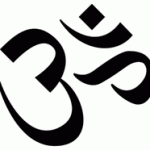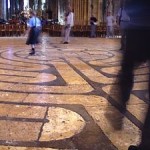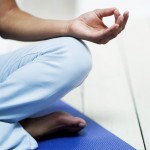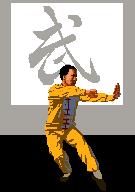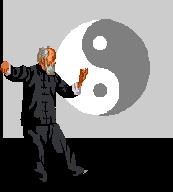You may have noticed that it’s been awhile since I last posted on this blog….about a year now. Why – you might ask ?

Meditations by Miria Cook
Through this last year, I have continued to actively consult with clients, teach Spiritual Development Courses and post insight/updates on social media, particularly on Twitter.
But I have also been supporting some folks that are pretty close to me as well.
Please understand that I won’t/can’t go into the circumstances as those close to me personally have chosen to keep out of the public eye.
I’m a somewhat public person because of what I do, but they are not – in fact they have remained quite private even though circumstances may have lead them to another choices.
And since I don’t believe in “living out loud” unless it’s a clear choice, we’ll just respect their privacy….. and move on…..
So here I am back to blogging…..
What I can speak about is that I’ve also been working very hard on many exciting Spiritual Development Projects. I will be launching and introducing these to you in the next few months: I’m taking an even bigger leap into the 21st Century – yes, I can hear some of you saying: “Gosh Miria, it’s about time…”
Hopefully, you will find these resources useful and life-changing in inspirational ways.
Just as little personal update: I’m very well and so is “my little darling” who turned 11 years old a couple of weeks ago…… yes, he’s a Gemini if you hadn’t guessed it already and I definitely got “two dogs for the price of one” when I adopted him. We just celebrated our 10th anniversary together since his rescue. As ever, he’s a wonderful & determined little Soul and I love him “just as he is” (that’s for all the Bridget Jones fans out there) !
So to all my loyal clients and my avid readers, let’s just say I feel more inspired & determined than ever to assist you in spiritually-centred ways to empower in your life ……with more insight, more inspiration and more opportunities for learning, healing & growth.
This time of the year brings renewal & replenishment – especially true for those of us who endured the ice storm of 2013 & the harsh winter of 2014 – all well behind us now physically but for some the energy impact is still being felt.
Besides which the spring had a bit of a rocky start to it, energetically speaking that is.
No doubt, many of you noticed a “harsh energy element” this April and even into the early to the mid part of May. Many of you have been left feeling a bit unsettled or even prone to experiencing some unusual emotional reactions to circumstances that normally wouldn’t faze you.
I’m going to deal with this topic in my next posting as it’s going to be a rather in-depth explanation of what is happening energetically in the Universe these days. I’ll be covering how to cope in some practical ways with these energies. Also how you can grow from these shifting energies rather than getting stuck in the mire of unproductive responses.
So next up: Step 1 in Renewal & Replenishment Process….. MEDITATION !
Here’s a little summary – you could say a primer- of some of the major types, styles and techniques of meditation practices. It’s by no means an exhaustive list, but just a little something to whet the appetite for a substantial serving of the same in future posts.
So keep reading….enjoy…… and it’s good to be back blogging !
A Short Introduction to Meditation*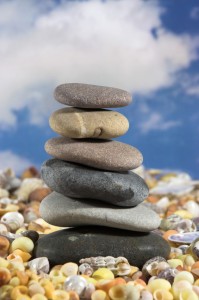
Meditation Defined:
“Meditation” is wide-ranging term that describes methods, systems and/or techniques that when practised on a regular basis help to create a state of balance between Mind|Body|Spirit.
Regular meditation can provide an on-going sense of well- being and a feeling of relaxation.
Most meditation methods have a strong element of focused breathing, also know as:
-
“breathwork”
-
“pranama”
-
“mindful breathing”
to help to bring the Mind into focus and to anchor the meditator in the “present moment”.
This works because focused breathing – when done properly – generally triggers “the relaxation response” in the body. Along with focused breathing, specified movements may also be part of the practice depending on the system of meditation.
Whilst meditating, many practitioners often describe feelings of:
-
calmness (ease of tenseness or lessen of anxious feelings)
-
timelessness (floating feeling)
-
sense of inner peace (feeling of all is “right with the world”)
-
oneness with the Universe (feeling connected to something bigger than oneself alone)
-
intuitive sharpness (deep sense of inner knowingness)
-
intuitive imagery (particularly in creative visualization)
-
spontaneous flow of creative ideas
-
sense of self-mastery and inner balance
Though admittedly, the last item usually takes some time and routine practice to achieve.
After meditation, practitioners describe themselves as feeling more:
-
more relaxed
-
balanced
-
clearer-headed
-
de-stressed — bodies/muscles feeling less tense
-
more self-aware
Meditation is also vital component of psychic/intuitive development. 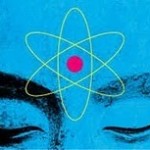
It’s a helpful and often necessary practice for students who have difficulty reining in the constant stream of mundane or critic thoughts that keep them from experiencing the knowingness of true intuitive insight.
**N.B – Though meditation can be a profoundly wonderful and healing practice, I always recommend that beginners approach it in a gentle and somewhat cautious manner initially. Why ? Because meditation is also a potent method of changing brain-consciousness, if not brain-chemistry.
It’s kind of like being given the keys to the Ferrari. Best way to stay safe: get acquainted with this high-powered mechanism, know the basics of driving & the conditions of the road before setting out as well as where you might to end up !
Some folks are really intimidated by the thought of starting to meditate. There are as many methods of meditation as there are approaches. Many goals and many outcomes…
The best way to conquer the fear of starting to meditate is to take a little time and explore, find out more about each approach and practice so that you can choose the one that suits you and your belief system best.
The following is a brief outline of various types of meditation – perhaps some form of the meditation on the list will speak to you.
Perhaps it will lead you to embrace some of the benefits of meditation which can include:
-
stress-reduction
-
relaxation response
-
energy balancing
-
awakening or deepening intuitive awareness & creativity
-
feeling connected to “Your Spiritual Self & Source”
-
and possibly with time and practice – self-healing and self-awareness at a deep level.
Types of Meditation
Meditation can be broken down roughly into two main types or categories:
-
stillness-forms of meditation and
-
movement-forms of meditation
Many forms of meditation – like Yoga or Tai Chi – have components of each in their style.
Here’s a brief summary of some of many styles of meditation.
STILLNESS FORMS
-
Guided Meditation
Guided mediation and/or Creative Visualization is generally lead by a group leader or monitor. The leader, teacher, monitor helps participants to focus on a cohesive series of images and/or sensations that are soothing and relaxing. These visions and/or sensations lead the seeker to deeper levels of consciousness and of intuitive awareness.
As an highly-experienced Intuitive & Psychic Development Teacher, I will be devoting a whole future article on this type of meditation technique. It is foundational to the development of psychic awareness and creative flow.
-
Mantra Meditation
From the Sanskrit, “mantra” (“sacred sound”) – is a word, sound, or group of words or sounds that are believed to have either psychological, spiritual and/or physical power.
In this form of meditation, a centering word or phrase or sound is silently repeated thus creating a mantric rhythm. This repetition enable to seeker to inhibit the distracting thoughts that come from the internal or critical voice.
By focusing the mind on the ‘mantric rhythm” and matching “the breath” to rhythm, the mind is brought into the awareness of the present moment.
This style is often a central part of Eastern religious meditative practices of Hinduism Buddhism, Jainism, Sikhism and practices like Transcendental Meditation or TM.
For more information click here: mantra
-
Mindfulness Meditation
Mindfulness meditation is based on “Vipassana” the Sanskrit word for “clarity of mind & awareness of true reality”. It is primarily part of Buddhist meditation practices but it has now been adopted and modified by modern-day psychology.
This type of meditation is closely related to Mantra meditation.
The state of Vipassana – mind-clarity – increases as the seeker becomes aware of and is accepting of “living & breathing in the now” or of “being in the present moment”.
To broaden one’s conscious awareness of the now, the seeker focuses on what she/he is experiencing during meditation, such as the flow of breath, thoughts and emotions but practitioner learns to let them pass without judgment.
-
Centering Prayer (expert from Wikipedia)
“Centering prayer is a method of contemplative prayer or Christian meditation, placing a strong emphasis on interior silence.
Though most authors trace its roots to the contemplative prayer of the Desert Fathers of early Christian monasticism, to the Lectio Divina tradition of Benedictine monasticism, and to works like The Cloud of Unknowing and the writings of St. Teresa of Avila and St. John of the Cross and its origins as part of the “Centering Prayer” movement in modern Catholicism and Christianity can be traced to several books published by three Trappist monks of St. Joseph’s Abbey in Spencer, Massachusetts in the 1970s: Fr. William Meninger, Fr. M. Basil Pennington and Abbot Thomas Keating.”
Other Contemplative or Observational Forms:
-
Mandalas and Meditation
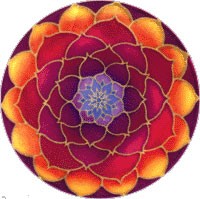 Mandala is Sanskrit for ‘circle’ and as such it primarily a spiritual and ritualistic symbol in Hinduism and Buddhism. It is meant to represent the Universe and its complexity.
Mandala is Sanskrit for ‘circle’ and as such it primarily a spiritual and ritualistic symbol in Hinduism and Buddhism. It is meant to represent the Universe and its complexity.
Variant of the circle design – known by different names – are found in Aboriginal creation beliefs around the world. Here’s a link to a wide variety of Native American mandala images.
The Mandala may be used as a spiritual teaching tool and as an aid to meditation or trance induction.
Much like a Mantra, is it used to assist the seeker to focus their attention in establishing a sacred space within & without.
Nowadays the term “mandala” is often used as a generic term for a circle design that is representative of the Universe both metaphysically or symbolically or physically.
Click on Mandalas for more information on this subject.
-
Art and Meditation
Art meditation is the viewing and contemplation of “Sacred Artwork” by the observant. This is done to evoke a deeper sense of connection or feelings of closeness to one’s Diety and Creator/Creatrix. Part of the benefit of art meditation is the effect of the symbolism inherent in the artwork to evoke that sense of connection to Creative or Infinite Intelligence.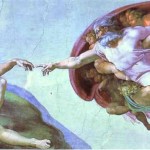
This symbolism can also awakening the connection to the Subconscious Mind of the observer thus heightening intuition is some: as is said to be the case in the artwork of the Tarot Deck.
Many of you are very familiar with Sister Wendy Beckett, the nun and art historian who so skillfully and articulately guides so many of us through the most famous art galleries in the world.
You could think of the way she presents, in such a masterful way, the various aspect of “liturgical” artwork, as a form of “guided art meditation”.
MOVEMENT FORMS
-
Labyrinths
The Labyrinth forms part of many belief systems around the world.
It essentially is a design or shape forms that is set in the stonework of a floor/wall or it can be made out of living organic material (shrubbery).
The design form represents the twists & turns that are the path or “pilgrimage” to the spiritual centre of one’s life.
The design form can also represent the Deity itself. The Labyrinth can also represent the concern or problem the one is trying to figure out, solve or come to terms with.
“In walking the path”, the seeker travels the pattern literally or mentally while contemplating each step attempting to get closer to the heart of the matter or their Source or the solution.
Full history and explanation of the Labyrinth.
Yogic Meditation varies in form and practice from a series of postures (assanas) and controlled breathing (pranayama) in both group practice or individual meditation. There’s much to be said on the subject and I will be devoting a whole future post on the influences of yogic practices on intuitive development.
Based in Traditional Chinese Medicine and martial arts, the practice of Qi Gong – “Life Energy Cultivation” – includes restoring, balancing and maintain “chi” ( Life Force Energy ). The goal is to increase and maintain good balanced health. Similarly to yoga, this system brings together various methods in its practice.
The practitioner “cultivates chi ” to aligning Mind|Body|Spirit through meditation, relaxation, physical movement and breathing exercises.
In various Eastern philosophies (Daoist, Buddhist, Confucian) Qi Gong is believed to assist the practitioner to access to higher dimensions of awareness and to awaken to one’s core essence and potential.
Qi Gong can include moving meditation, coordinating slow flowing movement, deep rhythmic breathing, and a calm meditative state of mind.
T’ai Chi or Tai Chi is series of conjoined fluid, graceful, posture-driven forms. Its origins stem from Chinese martial arts. These slow movements are performed while focused deep breathing. Foundations of the practice are sourced from Buddhist, Doaist and possibly Confucian roots.
Tai Chi is performed for:
-
Health
-
Meditation:
-
Martial art
The meditative aspect of tai chi provides the opportunity to trigger a “relaxation response”. This is seen as vital to maintaining optimum health by relieving stress and maintaining a balanced healthy metabolism.
Click on Tai Chi for a full explanation
I hope you have enjoyed this “primer” article on some types & style of mediation and find some inspiration to explore its benefits !
Until next time – just remember one thing – keep breathing !
* N.B. – This article is intended to be informational & educational in nature only and not intended to take the place of formal instruction in meditation nor any medical/therapeutic alternatives.
For more information about formal meditation training, please contact me by email: miria@intuitionofspirit.com
Copyright 2014 Miria Cook
